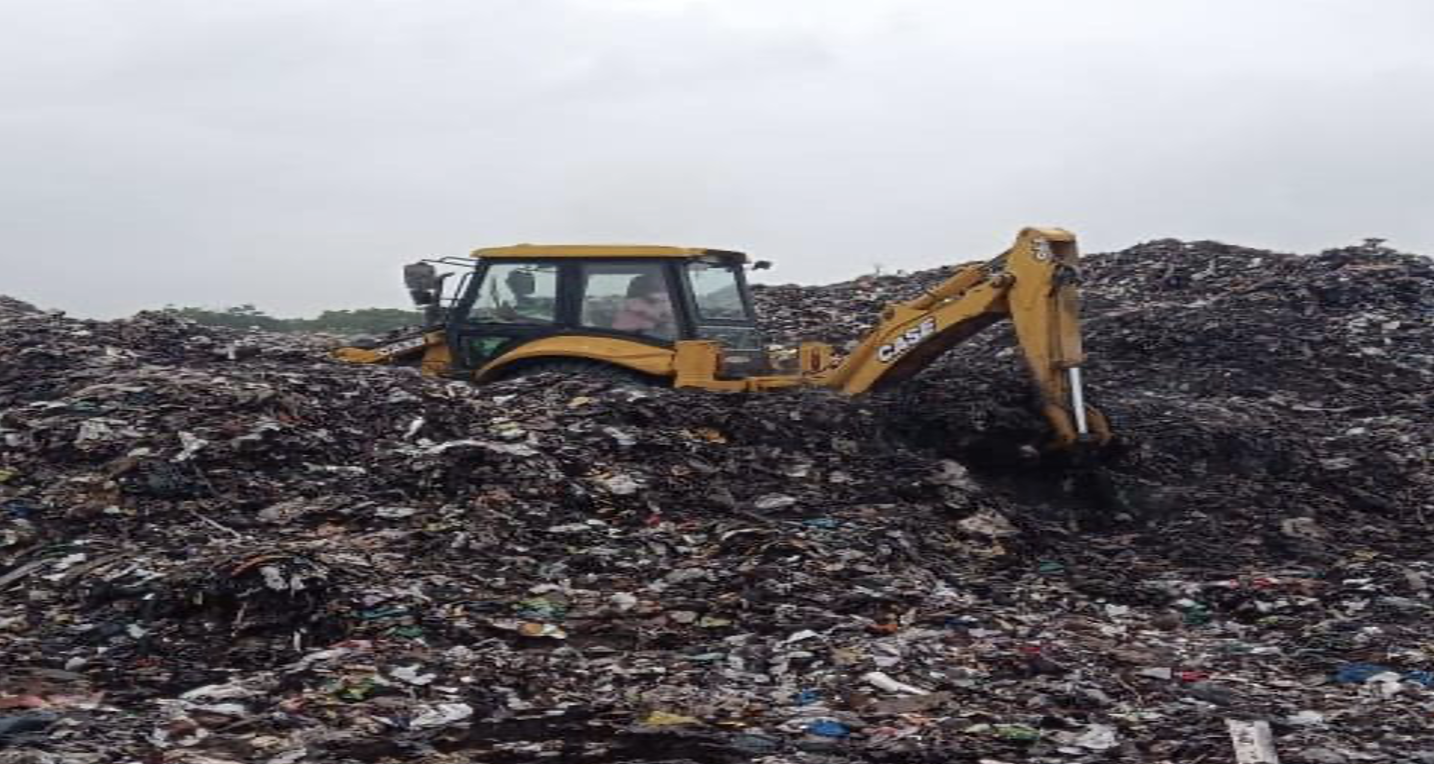
Urban local bodies need a comprehensive policy for reuse of reclaimed land
The Union Ministry of Housing and Urban Affairs recognised that the unlined dumpsites in India are creating various irreversible environmental hazards. The major sources of pollution are:
- Puddles of leachate flowing through the adjacent area and reaching the water table Long-term issues of greenhouse gas emissions
- Surface water and groundwater pollution
- Dumpsite surface fires
- Limitations on urban development that make this mode of disposal unmanageable
India’s cities are struggling to manage their waste as these dumpsites have already exceeded their capacity and cannot take in any more waste. They have also not managed to find land for installing waste-processing facilities.
As much as 1,250 hectares of the precious land is lost every year in India to dispose of the municipal solid waste, according to the Swachh Bharat report (2020). The National Green Tribunal has estimated that more than 10,000 hectares of valuable urban land is locked up under 3,159 legacy waste dumpsites in India.
These dumpsites have emerged as pollution hubs in the middle of human settlements, as cities have grown over the decades. It has, therefore, become a necessity for the city authorities to reclaim the existing dumpsites in an environmentally sound and economically viable manner.
The Centre has earmarked Rs 1,41,600 crore under its flagship Swachh Bharat Mission 2.0 (SBM 2.0), with a goal of achieving “garbage-free cities”. The focus of the mission is on remediation of all legacy dumpsites in the country by biomining.

Biomining, according to the guidelines of the Central Pollution Control Board (CPCB), is the scientific process of excavation, treatment, segregation and gainful utilisation of aged municipal solid waste lying in dumpsites typically referred to as legacy waste.
SBM 2.0 has given a clear mandate to cities with a population of less than 1 million to remediate the existing legacy waste dumpsites by March 31, 2023. The deadline is a year later for cities with over a million inhabitants.
Biomining of legacy waste is going to gain huge momentum across the nation in the next few years fuelled by the financial assistance from SBM 2.0. Use of reclaimed land will also be a critical issue for city authorities to ensure best utility after necessary scientific investigations.
Cities like Indore, Bhopal, Ambikapur, Kumbakonam, Tirupati have already completed bio-mining projects even before SBM 2.0 surfaced. The reclaimed land in these cities have been used for various gainful applications.
In Indore, for instance, the land has been used for developing waste-processing facilities, including a bio-CNG plant, a material recovery facility as well as a construction and demolition waste-processing plant. The remaining land has been turned into a city forest.
Management of legacy waste has created an ecosystem of technology-based solutions for deriving land as a resource from legacy waste dumpsites. But it came with its unique operational and technical challenges.
A comprehensive policy direction for re-use of the reclaimed land after biomining is missing, despite a mandate from independent India’s largest flagship sanitation programme (in terms of the financial allocation) to clean up the decades-old garbage mountains in our cities.
There is no mention about the potential utilisation options of reclaimed land even in the Solid Waste Management (SWM) Rules, 2016. The cleared dumpsites are not permitted for habitation for at least 15 years, according to guidelines issued by CPCB.
Schedule I, H (2) of SWM regulations, 2016, however, recommends the use of closed landfill sites only after ensuring that gaseous emission and leachate quality analysis complies with the specified standards and soil stability is ensured.
The provision does not differentiate between bio-capped and bio-mined landfills. The CPCB guidelines on legacy waste management adds: This is because of unhealthy leachate below the site and formation of flammable and offensive landfill gases from waste pockets that may remain unexcavated.
All this might not be relevant for a bioremediated dumpsite, where the waste has been excavated, stabilised, segregated, and the land has been reclaimed completely.
After closure of landfills, the permissible options according to CPCB guidelines (after 15 years of post-closure monitoring) are:
- Waste processing facilities
- Open stadia
- Sports grounds
- Parks and gardens
- Parking lots
- Container yards
- Warehouses of non-flammables
- Similar facilities where people are not living or working all day and night
The absence of clear provision for end-use of reclaimed land after biomining leaves a lot to the imagination for the urban local bodies (ULB). As a result, ULBs even consider reusing the reclaimed land for large housing projects, considering the land’s local value.
This may appear to be a good option that could fetch substantial revenue to the city government, but we are yet to have enough evidence that the reclaimed land is completely free from any kind of contamination and toxins.

It is, however, debatable whether the reclaimed land can have long-term environmental and health impacts to be utilised for commercial applications such as housing complexes and residential societies, malls and offices and institutions.
Biomining projects are currently in a nascent stage in the country. In order to avoid any long-term damage, it is advisable to leave the land and conduct post-mining monitoring for all possible environmental parameters before taking appropriate decisions on reuse of the reclaimed land.
The potential scale of biomining operations in the next two-three years in India makes it imperative to have a comprehensive policy for the ULBs on reuse of the reclaimed land. These policies need to be backed by science and research-based learning.
The policies must be backed by an established protocol encompassing mandatory environmental and social safeguard measures as well as monitoring protocols, in line with the Environmental Impact Assessment (EIA).

Once ULBs complete the checklist for the protocol to obtain clearances from the regulatory authorities, the reclaimed land can be allowed for reuse according to the findings.
This blog’s author Dr Richa Singh is a Programme Officer at Centre for Science and Environment, New Delhi. This blog originally appeared on the website of Down To Earth on April 4.



